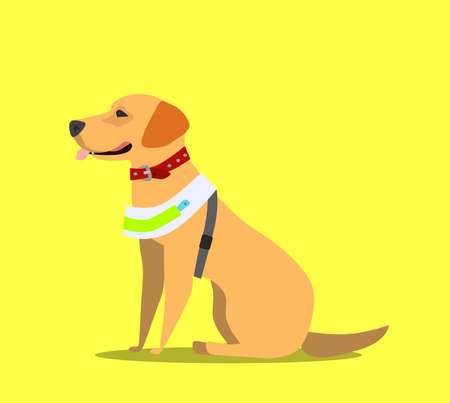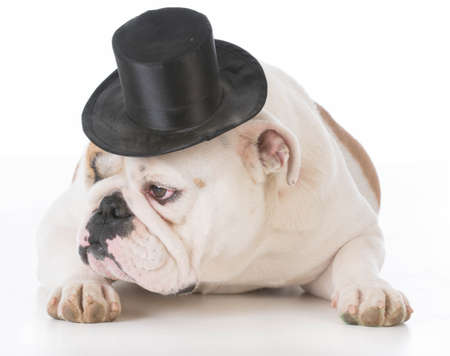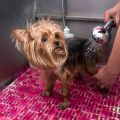Introduction to Breed-Specific Grooming in the UK
When it comes to caring for our beloved pets, British pet owners are renowned for their devotion and attention to detail. The United Kingdom is home to a delightful mix of dog and cat breeds, each with its unique charm and grooming requirements. From the regal British Shorthair to the energetic Border Collie, understanding breed-specific grooming is essential for maintaining your pet’s health, comfort, and classic good looks. Grooming isn’t merely about keeping fur neat; it’s about respecting the distinctive heritage and physical characteristics that make each breed special. In this article, we’ll explore why tailored grooming routines matter across the UK’s most popular breeds and how embracing these practices can strengthen the bond between you and your four-legged companion.
2. Understanding British Dog Breeds and Their Grooming Needs
Britain is home to a delightful array of dog breeds, each with its own character, coat type, and grooming requirements. From the elegant Cocker Spaniel to the sturdy Bulldog and the hardy Border Terrier, understanding their breed-specific needs ensures your pet remains comfortable and looking its best in every season. British grooming traditions often emphasise both practicality and style, reflecting the UK’s love for well-kept companions. Below, we explore some of the UK’s most cherished breeds and highlight key aspects of their coat care and typical British grooming routines.
Popular UK Dog Breeds & Their Coat Care Requirements
| Breed | Coat Type | Grooming Frequency | Typical British Grooming Practice |
|---|---|---|---|
| Cocker Spaniel | Silky, medium-length, feathered | Weekly brushing; professional trim every 6-8 weeks | Hand-stripping or scissoring for a tidy look; ear cleaning is essential due to long ears |
| Border Terrier | Wirery, dense double coat | Hand-stripping 2-3 times a year; regular brushing | Traditional hand-stripping maintains natural texture; minimal bathing to preserve coat oils |
| Bulldog | Smooth, short coat | Weekly brushing; frequent face fold cleaning | Special focus on skin folds to prevent irritation; gentle brushing to remove loose hair |
Cultural Influences on British Grooming Practices
The British climate—often cool and damp—means that mud and moisture are common challenges for dog owners. As such, grooming routines often include thorough towel drying after walks and paying special attention to paws and underbellies. Many owners invest in absorbent mats or stylish drying coats for their pets, blending functionality with aesthetic appeal—a hallmark of British home life. Regular visits to local groomers are popular not just for maintaining breed standards but also as part of a wider community tradition, where pet care is woven into daily living.
Aesthetic Meets Practicality in UK Homes
Caring for these beloved breeds goes beyond just appearance—it’s about ensuring health, comfort, and happiness. British dog lovers take pride in integrating high-quality grooming tools and thoughtful accessories into their homes: wooden brushes displayed on shelves or elegant ceramic bowls for bathing essentials bring an understated charm to everyday routines. By appreciating each breed’s unique needs alongside the rhythms of British living, you can nurture both your pet’s wellbeing and your home’s inviting atmosphere.

3. Caring for British Cat Breeds
Focusing on Beloved Felines: British Shorthair & Scottish Fold
When it comes to grooming cats in the UK, popular breeds like the British Shorthair and Scottish Fold have unique needs influenced by both their genetic makeup and Britains famously variable climate. These cats are not only cherished companions but are also well-suited to the British home environment—cosy, often centrally heated, and sometimes a touch damp. As such, grooming routines must be tailored to keep their coats healthy, reduce shedding, and ensure comfort all year round.
Coat Maintenance for the British Shorthair
The plush, dense coat of the British Shorthair requires regular attention to prevent matting and excessive hair around your home. Weekly brushing with a soft-bristle brush or a rubber grooming mitt helps distribute natural oils and keeps their fur looking luxuriously thick without becoming unruly. During spring and autumn, when they shed more due to seasonal changes, upping your brushing routine to twice weekly can help manage loose hairs—especially important in homes with carpets or fabric sofas.
Scottish Fold Grooming Essentials
The Scottish Fold’s coat varies from short to medium length, depending on lineage. While less prone to tangling than long-haired breeds, these cats still benefit from gentle weekly combing to keep their fur sleek and minimise hairballs. Pay special attention to cleaning the folds around their ears—a distinctive feature—which can trap dust and require a gentle wipe with a damp cotton pad.
Adaptation to UK Home Environments
British homes often use central heating during colder months, which can dry out your cat’s skin. Incorporating a humidifier or placing water bowls near radiators can maintain humidity levels and protect your pet’s skin health. Additionally, regular vacuuming will help control any stray fur on your furnishings, keeping your living space fresh and inviting.
Summary Table: Grooming Tips for Popular British Cats
| Breed | Coat Type | Brushing Frequency | Special Care Tips |
|---|---|---|---|
| British Shorthair | Short/Dense | Weekly (increase in shedding season) | Use soft-bristle brush; monitor for mats; increase brushing in spring/autumn |
| Scottish Fold | Short/Medium | Weekly | Clean ear folds; use gentle comb; check for skin dryness in winter |
By tailoring grooming routines to each breeds specific needs and adapting care habits to suit the British climate and home environment, you’ll ensure that your feline friends remain healthy, comfortable, and ever so stylish amidst the charm of UK living.
4. Seasonal Grooming Considerations
Living in the UK means embracing the ever-changing British weather, and this greatly impacts how we care for our furry companions. Each season brings unique grooming challenges, especially when considering breed-specific needs for both dogs and cats. Understanding how to adjust your pet’s grooming routine throughout the year ensures their comfort and keeps your home looking its best.
Adapting to the British Seasons
The UK’s climate is famously unpredictable, with crisp autumns, damp winters, blossoming springs, and mild summers. For pet owners, each season demands a slightly different approach to grooming:
| Season | Main Challenges | Grooming Focus |
|---|---|---|
| Autumn | Mud, damp fur, falling leaves | Paw cleaning, regular coat brushing to remove debris, checking for matting in long-haired breeds |
| Winter | Wet weather, mud, salt/grit on roads | Frequent paw washing (especially after walks), thorough drying, increased brushing to prevent knots and tangles |
| Spring | Moulting begins, pollen exposure | De-shedding tools for heavy moulters (like Labradors or British Shorthairs), frequent vacuuming at home, extra attention to allergy-prone pets |
| Summer | Excessive shedding, risk of overheating | Light trimming for some breeds (avoid shaving double coats), regular brushing to remove loose fur, ensuring hydration and sun protection for lighter-coloured pets |
Mud Management: A British Essential
With muddy fields and rainy footpaths a staple from autumn through spring, managing mud becomes an art form. Many British homes keep a dedicated “muddy paw station” near the door—think absorbent mats, soft towels, and gentle paw washers. For breeds like Cockapoos or Border Collies that love the outdoors but have longer coats, consider investing in a quick-dry dog robe or microfibre mitts to make post-walk clean-ups swift and stylish.
Coping with Moulting in Spring & Summer
Moulting is particularly noticeable as the days grow longer. Breeds such as the British Shorthair cat or Labrador Retriever shed their undercoats in preparation for warmer weather. Regular brushing not only minimises hair around your home but also helps maintain your pet’s skin health. Opt for slicker brushes or de-shedding combs suited to your pet’s coat type; this small daily ritual can be rather therapeutic and keeps your interiors beautifully fur-free.
A Few Quick Tips for Year-Round Grooming Success:
- Wipe paws after every walk during wet months to prevent dirt spreading indoors.
- Use breed-appropriate brushes and grooming tools—what works for a Westie may not suit a Maine Coon!
- Incorporate grooming into playtime for a positive experience.
- If in doubt, consult a local groomer familiar with British breeds and climate quirks.
Tailoring your grooming routines to Britain’s seasons ensures both you and your pets can enjoy a comfortable, beautiful home—rain or shine.
5. Essential British Grooming Tools and Products
When it comes to at-home grooming for your beloved British breeds, selecting the right tools and products is key to maintaining their unique coats and overall well-being. The UK market offers a variety of high-quality grooming essentials specifically designed to cater to the needs of different dog and cat breeds, from the lush curls of a Cockapoo to the dense fur of a British Shorthair. Below, you’ll find a helpful guide to must-have home grooming accessories, with an emphasis on reputable British brands and practical tips for everyday use.
Must-Have Home Grooming Kit
| Tool/Product | Purpose | Recommended British Brands |
|---|---|---|
| Slicker Brush | Detangles fur, removes loose hair – ideal for spaniels and long-haired cats | Ancol, Mikki |
| Bristle Brush | Adds shine, distributes natural oils – perfect for short-coated breeds like Bulldogs and British Shorthairs | Mason Pearson, Pet Teezer |
| Comb (Wide & Fine Tooth) | Tackles mats and checks for fleas – useful for all breeds | Mikki, Groom Professional |
| Nail Clippers/Grinders | Keeps claws tidy and safe | Animology, Wahl UK |
| Paw & Coat Scissors (Rounded Tips) | Trims delicate areas around paws and ears | Rosewood, Mikki |
| Specialist Shampoos & Conditioners | Cleanses while respecting breed-specific skin sensitivities (e.g., hypoallergenic formulas) | Wahl UK, Animology |
Tips for Selecting Quality British Brands
- Look for products made in the UK that prioritise animal welfare and sustainability.
- Choose tools suited to your pet’s coat type—Bristol-based Ancol offers a range tailored to every breed.
- Consider ergonomics: select brushes with comfortable handles for longer sessions.
Practical Day-to-Day Grooming Advice
- Create a regular routine—short daily brushing helps prevent tangles and keeps your home fur-free.
- Keep treats nearby to reward positive behaviour during grooming sessions.
- Check tools regularly for wear; replace brushes or clippers when bristles dull or blades blunt.
The British Touch: Why Local Matters
Selecting British brands not only supports local businesses but also ensures your grooming kit is designed with an understanding of native breeds’ unique needs. Whether it’s the right brush for a wiry Terrier or gentle shampoo for a sensitive Whippet, investing in quality UK-made products means safer, more enjoyable grooming experiences at home—for both you and your cherished companion.
6. Maintaining Pet Comfort and Wellbeing
Creating a positive grooming experience for your dog or cat is about more than just good looks—it’s essential to their overall wellbeing. In the UK, where our pets are considered cherished members of the family, integrating breed-specific grooming with a holistic approach to comfort and happiness makes all the difference. Gentle routines, calm environments, and thoughtful touches help ensure every grooming session is enjoyable and stress-free.
Integrating Grooming with Everyday Wellbeing
Grooming should be part of your pet’s daily life, blending seamlessly with other aspects of their care. This means recognising when your British Shorthair needs a gentle brush after a rainy walk in the park or when your Cocker Spaniel could benefit from a soothing bath on a quiet Sunday afternoon. The key is consistency and patience—building trust through familiar routines and positive reinforcement.
Creating a Calm Home Environment
Your home environment plays a vital role in how your pet perceives grooming. A quiet room with natural light, familiar scents, and minimal distractions can transform grooming from a chore into a bonding moment. Consider playing soft music or offering favourite treats to help them relax.
Tips for Keeping Pets Comfortable During Grooming
| Tip | Description | British Example |
|---|---|---|
| Use Soft Brushes | Choose breed-appropriate brushes to avoid irritation. | Bristle brush for Labradors; wide-tooth comb for Persians. |
| Keep Sessions Short | Frequent but brief grooming keeps anxiety at bay. | Five-minute sessions after walks on Hampstead Heath. |
| Praise & Treats | Offer gentle praise and healthy treats as rewards. | A small biscuit after detangling an Old English Sheepdog’s coat. |
| Check for Discomfort | Regularly look for skin irritation or signs of distress. | Inspect paws for mud or thorns after countryside rambles. |
| Create Routine | Groom at the same time each week to build familiarity. | Sunday evening “spa” sessions as a family ritual. |
The Benefits of Gentle Routines
A gentle approach not only keeps your pet looking their best but also strengthens the bond between you. Regular handling helps spot early signs of health issues—such as matting, lumps, or parasites—common among certain British breeds. Ultimately, it’s about celebrating your pet’s unique character while ensuring they feel safe, comfortable, and loved in their home environment. By weaving breed-specific grooming into the fabric of everyday life, you create a haven where your four-legged friends can thrive—calm, contented, and truly at home.


